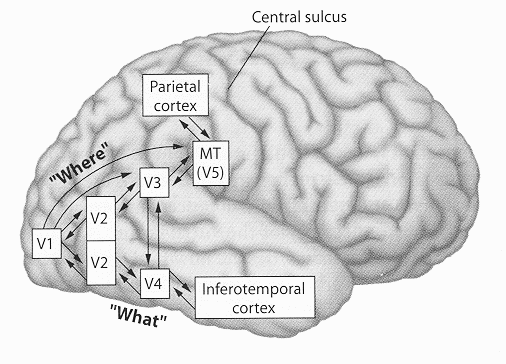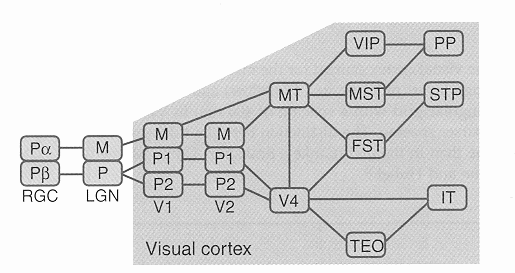
The visual cortex contains over 30 visual areas in the occipital lobe (the primary and some extrastriate visual cortex), and the temporal and parietal lobes (other higher extrastriate visual areas). These visual areas are specialized to process different aspects of visual information and they form two major pathways, the dorsal (from V1 to parietal lobe) pathway and the ventral pathway (from V1 to the temporal lobe), each can be considered as a hierarchy consist of many levels of visual information processing stages. The dorsal pathway is also called the "where" pathway as it is mainly for processing information regarding location and motion, and the ventral pathway is also called the "what" pathway as it is mainly for processing information regarding the form and identity of visual objects.

These two pathways are composed of various visual areas which form different stages of visual information processing in a hierarchical fashion, as shown in the diagraom.
